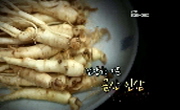The aim of this work is to assess the safety of pesticides in ginseng sprayed by safe use guideline. When tolclofos-methyl was sprayed on ginseng by safe use guideline, the residue amounts(MRL) of it in ginseng was 0.13 mg/kg which is below than 0.3 m...
http://chineseinput.net/에서 pinyin(병음)방식으로 중국어를 변환할 수 있습니다.
변환된 중국어를 복사하여 사용하시면 됩니다.
- 中文 을 입력하시려면 zhongwen을 입력하시고 space를누르시면됩니다.
- 北京 을 입력하시려면 beijing을 입력하시고 space를 누르시면 됩니다.
안전사용기준에 따라 살포된 농약의 인삼 중 잔류양상 = Residues of Pesticides in Ginseng Sprayed by Safe Use Guideline
한글로보기https://www.riss.kr/link?id=T11971809
- 저자
-
발행사항
대구 : 경북대학교 대학원, 2010
-
학위논문사항
학위논문 (석사) -- 경북대학교 대학원 , 응용생명과학부 농화학 전공 , 2010. 2
-
발행연도
2010
-
작성언어
한국어
- 주제어
-
DDC
630.24 판사항(22)
-
발행국(도시)
대구
-
형태사항
33 p. ; 26 cm
-
일반주기명
참고문헌: p. 28-31
- 소장기관
-
0
상세조회 -
0
다운로드
부가정보
다국어 초록 (Multilingual Abstract)
The aim of this work is to assess the safety of pesticides in ginseng sprayed by safe use guideline. When tolclofos-methyl was sprayed on ginseng by safe use guideline, the residue amounts(MRL) of it in ginseng was 0.13 mg/kg which is below than 0.3 mg/kg, maximum residue limit established by Korea Food & Drug Administration(KFDA). The residue amounts of ginseng parts, head part was 0.37 mg/kg and body part was 0.13 mg/kg. In case of difenoconazole, the residue amounts in ginseng was 0.81 mg/kg. which was exceed the MRL, 0.2 mg/kg. By the analyze results of ginseng part, the residues of head and body part were 3.01 and 0.40 mg/kg, respectively. In experiment of vinyl mulching, the residue amount of difenoconazole in ginseng was 0.05 mg/kg. The residue amounts of azoxystrobin in ginseng sprayed by safe use guideline was 0.14 mg/kg. This residue was not exceed the MRL 0.5 mg/kg. The residue amounts by ginseng parts was 0.51 mg/kg for head part and 0.28 mg/kg for body part. In case of vinyl mulching, the residue amount of azoxystrobin was 0.02 mg/kg. When cypermethrin was sprayed on ginseng by traditional application, its residue amount in ginseng was 0.25 mg/kg which exceeded 0.1 mg/kg, MRL established by KFDA. But in case of vinyl mulching and soil application, its residue amounts were 0.04 and 0.07 mg/kg, respectively. The residue amount of diethofencarb in ginseng was 3.01 mg/kg which exceeded the MRL, 0.3 mg/kg. Further, in case of vinyl mulching and soil application, its residue amounts were 1.71 and 9.39 mg/kg which exceeded the MRL 0.3 mg/kg. Although the residue amounts of both pesticides exceeded the MRLs for ginseng, we can explain that pesticides remained in head part of ginseng is probably the reason why higher pesticides residue levels were observed.
목차 (Table of Contents)
- 서 론 1
- 재료 및 방법 4
- 1. 시험포장 및 약제처리 4
- 2. 약제 처리 방법에 따른 구분 5
- 3. 인삼 중 농약의 잔류분석 6
- 서 론 1
- 재료 및 방법 4
- 1. 시험포장 및 약제처리 4
- 2. 약제 처리 방법에 따른 구분 5
- 3. 인삼 중 농약의 잔류분석 6
- 1) Toclofos-Methyl 6
- 2) Difenoconazole 7
- 3) Azoxystrobin 8
- 4) Cypermethrin 9
- 5) Diethofencarb 10
- 결과 및 고찰 14
- 요 약 26
- 참고 문헌 28
- 영문 초록 32








